- Kia ora
- Ōtaki River Bridge making great progress
- Mangaone stream livened through Culvert 24
- The historic Smíšek kilns
- With a touch of green
- Upcoming construction milestones
 Kia ora
Kia ora
I’m sure I’m not the only person experiencing a bit of déjà vu this month with COVID-19 restrictions back in place. Here on the PP2Ō project, the return to Level 2 restrictions have had an impact by slowing the project down a little due to the need for social distancing and far more emphasis on contact tracing requirements. I’m pleased to say, however, that work is still progressing well, and despite the Level 2 restrictions, we remain on schedule to complete our monthly milestones.
We are currently hoping to have Bridge 8, down at Te Horo Beach Road, open to traffic by the end of the first quarter of 2021. The progress being made there is obvious to see when you drive under it on SH1 – we hope you’re enjoying seeing the project develop.
The second stage of the Local Arterial Road (LAR) at Marycrest is currently scheduled to be open for traffic in October. The exact date is dependent on the weather, so we’ll provide more information closer to the time. When traffic switches to the LAR, traffic to the Cavallo Agistment Farm area will be diverted over Bridge 10.
We know many people would have heard concerns within the community regarding a possible closure of Ōtaki Gorge Road at its junction with SH1 in the coming weeks. I would like to reiterate that there has never been any intention to close the road this year. Unfortunately, some incorrect information was circulated within the community, which caused a lot of unnecessary concern. You have our undertaking, as has always been our practice, to consult with the community once we have worked through our options. We will also inform you well in advance of any closure that would take place. If you ever have any questions or concerns, or if you hear any worrying rumours relating to PP2Ō, feel free to check with us – we are here to help.
Please look after yourselves, your friends and family. Stay well.
If you need any further information on the PP2Ō Expressway project, please call us on 0800 PP2O INFO or email pp2o@nzta.govt.nz
Ngā mihi
Chris Hunt, Project Director
Ōtaki River Bridge making great progress
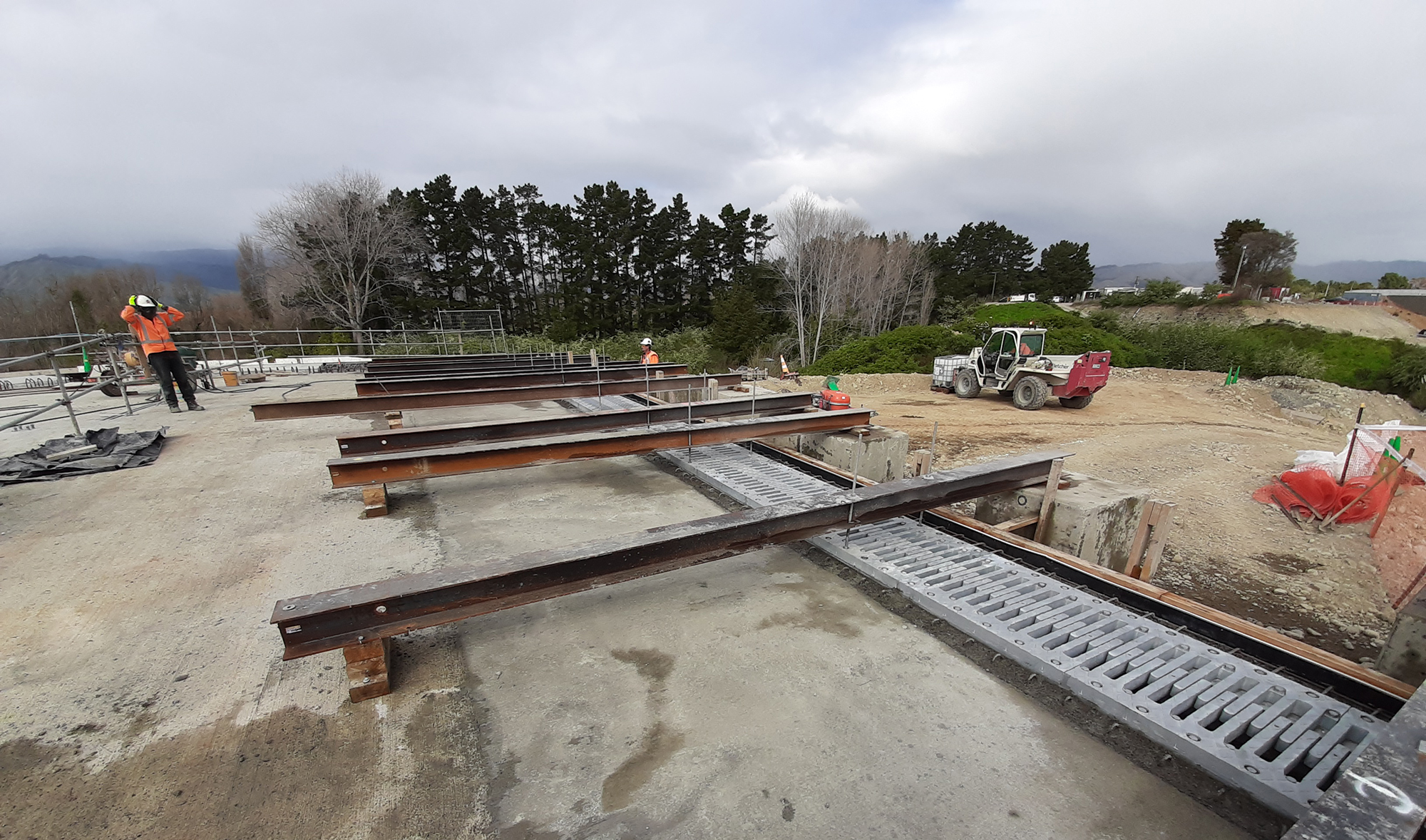
Concrete is poured in the early hours of the morning as the southern expansion joint is installed on Bridge 5.
The successful installation of the expansion joint on (Ōtaki River) Bridge 5, south end was a significant milestone in the bridge’s construction and provides some great benefits to the community.
Firstly, the bridge joint means less traffic noise. Secondly, in the event of an earthquake, the bridge has been designed so that it won’t collapse – it’s a literal lifesaver. The joint also cushions the general wear and tear that a bridge experiences from normal traffic.
“The expansion joint allows the bridge to move independently from the abutment, which is important for the safety of the structure during earthquakes and other events,” says Jethro Staite, Fletcher Infrastructure Leading Hand.
“On such a large structure, the concrete can expand during warm weather as the bridge heats up. That may increase the length of this bridge by up to 40mm. Without the room to move, any expansion would cause cracking and damage to the bridge.”
The expansion joint also allows the bridge to move when experiencing high loads from vehicles or lateral forces from earthquakes, reducing damage to the structure.
Now that the expansion joint on the southern end has been installed, work vehicles will be able to access the bridge and allow further construction work, such as building barriers and footpaths, to take place.
The work to install the expansion joint over the past six weeks has been very technical, fiddly work and Jethro Staite and the crew at Bridge 5 have done an incredible job. Now that the southern expansion joint is complete, the crew will repeat the process on the northern abutment.
Mangaone stream livened through Culvert 24
We hit a particularly important milestone on the PP2Ō project in late July, and one that left our team with a real sense of achievement.
On 27 July, our team livened the Mangaone stream through Culvert 24 in Te Horo. It wasn’t a quick process – preparations had started the previous week to make sure all the equipment was ready, and that the riprap leading up to the culvert was level.
On the next Monday, we blocked the diversion stream directly next to Culvert 24. At the same time, the diggers on the opposite side dug away the last bit of ground, allowing the stream to flow into the new waterway, through the culvert and all the way down to the sea.
For the rest of the week the environmental team was fishing in the diversion stream to make sure all the fish were safe and returned to the newly created stream.
The Mangaone stream has its origins in the Tararua Forest Park and is roughly 12km long. It runs from the east to west under SH1, and discharges to the sea at Te Horo Beach. The stream is home to a variety of fish species that live on the bottom of the sandy river beds, and between the rocks and underwater forests.
To assist plant and animal life in the new culvert, rock-climbing holds and cemented pebbles were added to the culvert’s floor. These will also act as a space where fish can take shelter when the stream dries up or when water flow may be restricted.
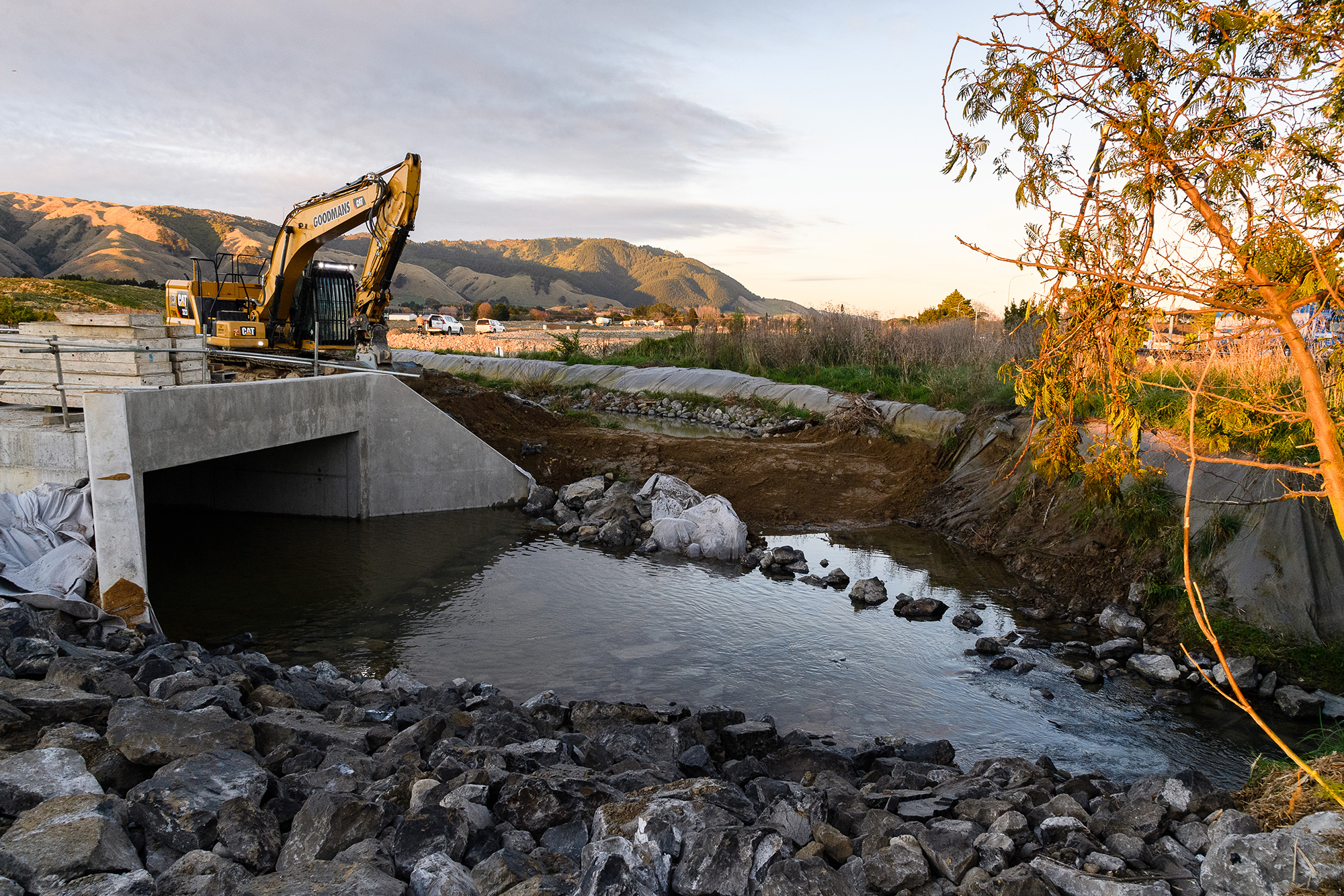
Closing the temporary diversion stream at Culvert 24 in Te Horo.
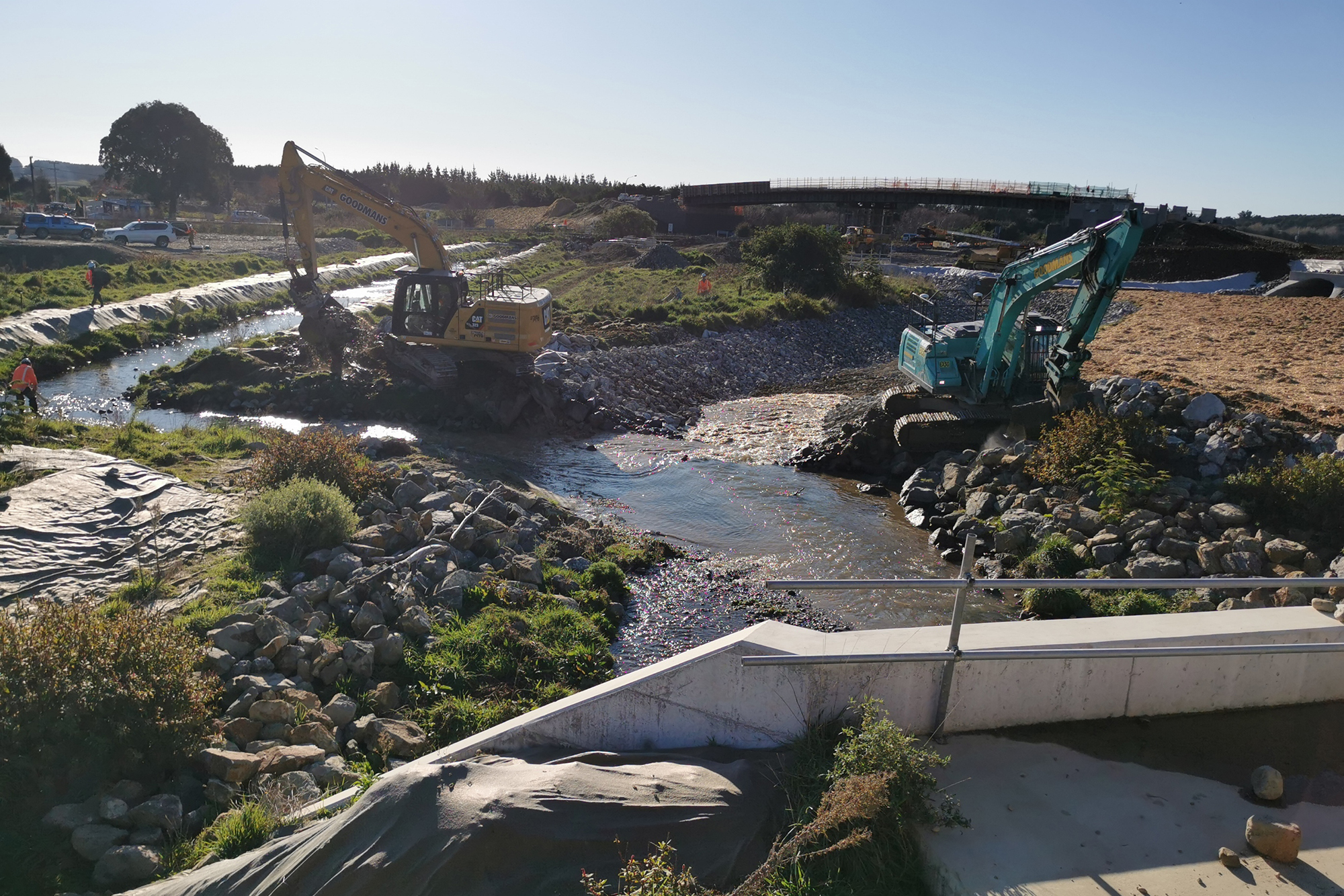
The moment the new stream was opened by the diggers.
The historic Smíšek kilns
The Smíšek kilns are another notch in the belt of the Ōtaki art scene, and the Mirek Smíšek Ceramic Arts Trust has huge ideas for the development of the kilns. The Trust intends for them to become the centrepiece of an active pottery and traditional weaving arts centre.
There’s one big problem: the unique beehive kilns – thought to be the only ones of their kind surviving in New Zealand – are smack bang in the middle of the new expressway and must be moved 40 metres to the west.
“If it weren’t for the expressway we wouldn’t have known about the kilns,” says Trust spokesperson Susie White. “Once all the overgrowth was removed for the construction, we rediscovered them.”
Deconstructing and reconstructing the kilns is a major, and very technical, undertaking. During the deconstruction, which took approximately a week per kiln, each brick was numbered and stored to await reconstruction.
Once it gets underway the reconstruction is expected to take about two months.
With a touch of green
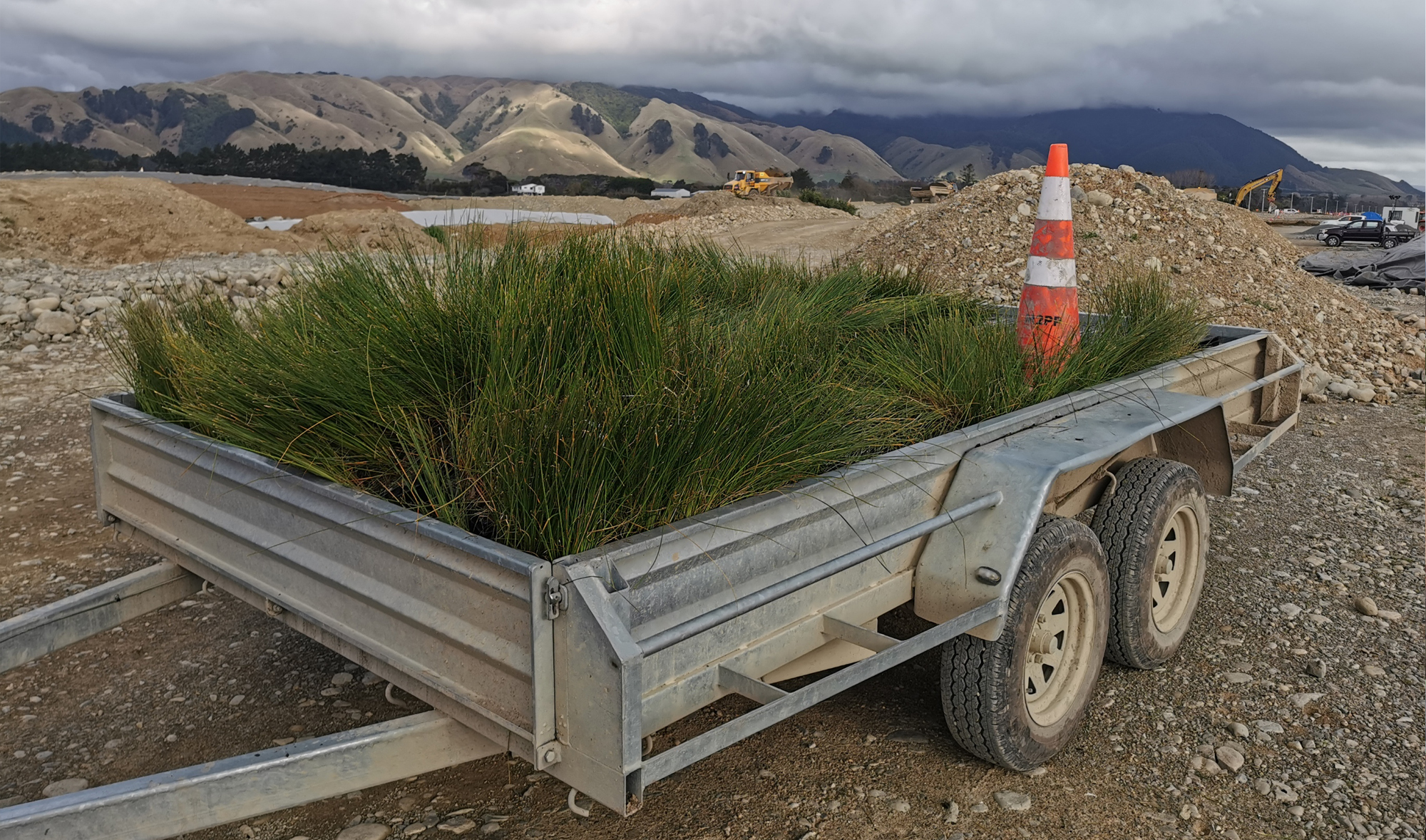
Apodasmia similis or commonly known as oioi or jointed wire rush ready to be planted.
Construction, believe or not, has a soft side. Being able to restore the natural landscape with appropriate planting is an environmental must on a project like PP2Ō.
“Planting season typically runs from June through to September, with the exception of some wetland and swale planting that can be done outside of the season, if conditions are suitable” says PP2Ō Environmental Manager, Alice Naylor. “An average of 2,500 plants get planted every working day on this project”.
It’s is a job that’s not only time consuming but very much dependent on human intervention and, of course, the weather.
At PP2Ō we are fortunate to have brothers Kisione and Mafi Kaufusi who absolutely love their jobs. They spend hours on end developing their own system in order to perfect their craft. “Once we have the area worked out, we work together to dig the holes. Then we place the necessary fertilizers in the holes, and place each plant next to its hole. Once that’s done, we each start on a different side and work down row by row until the plants are all planted.”
The project planting numbers are incredible – total plantings cover more than 45 hectares!
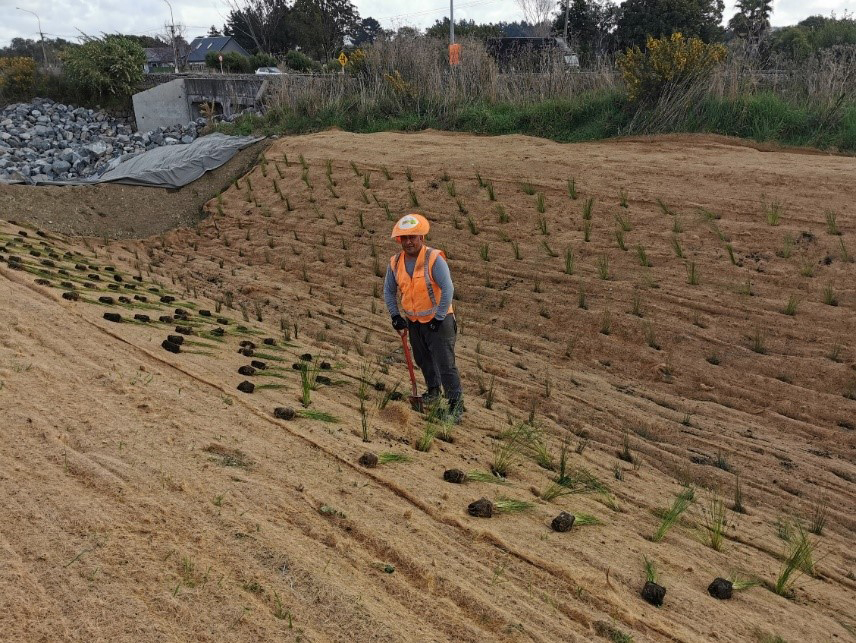
Mafi Kaufusi planting oioi grass in the School Road area.
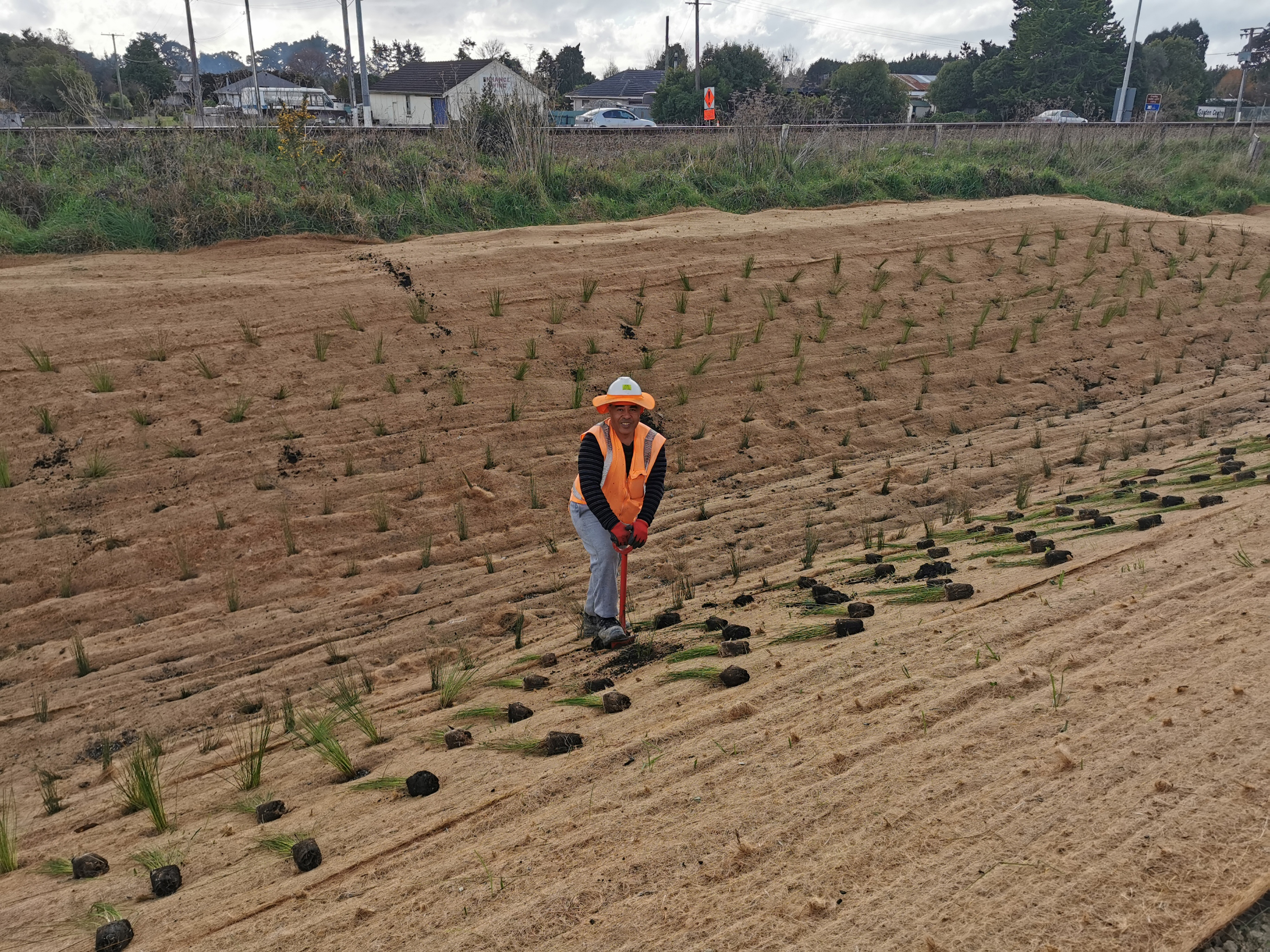
Kisione Kaufusi planting oioi grass south of Te Horo Bridge 8.
Upcoming construction milestones
Northern area update
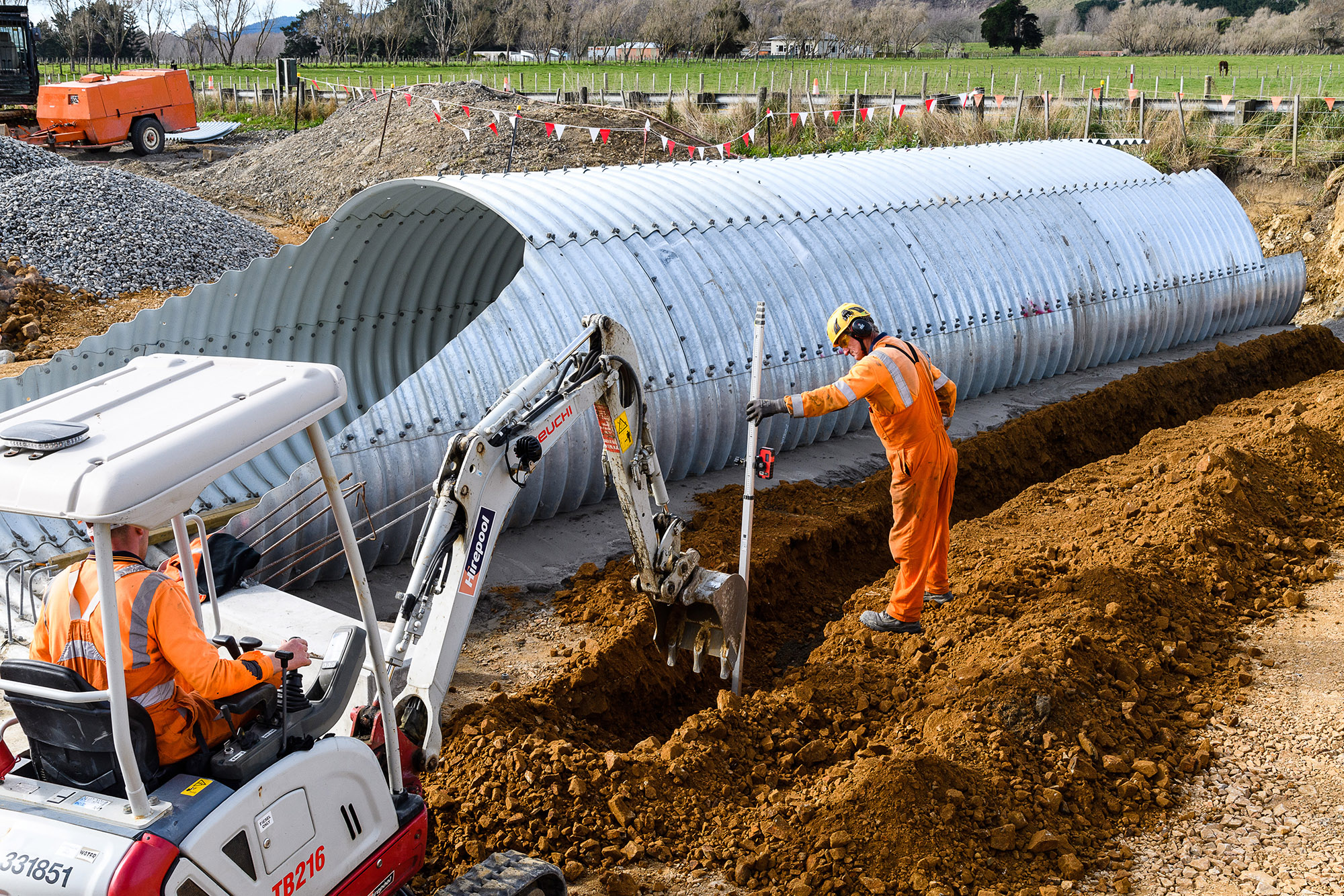
Work continues on the culvert by Bridge One in the Taylor Road area.
Installation of drainage to the expressway alignment between Taylors Road in the north and Ōtaki River in the south will continue through September to allow the remaining earthworks and associated works to be completed in the northern area. The construction of Bridge 1 is on track for an October finish, which will allow full construction access over the Waitohu Stream from within the site.
Middle area update
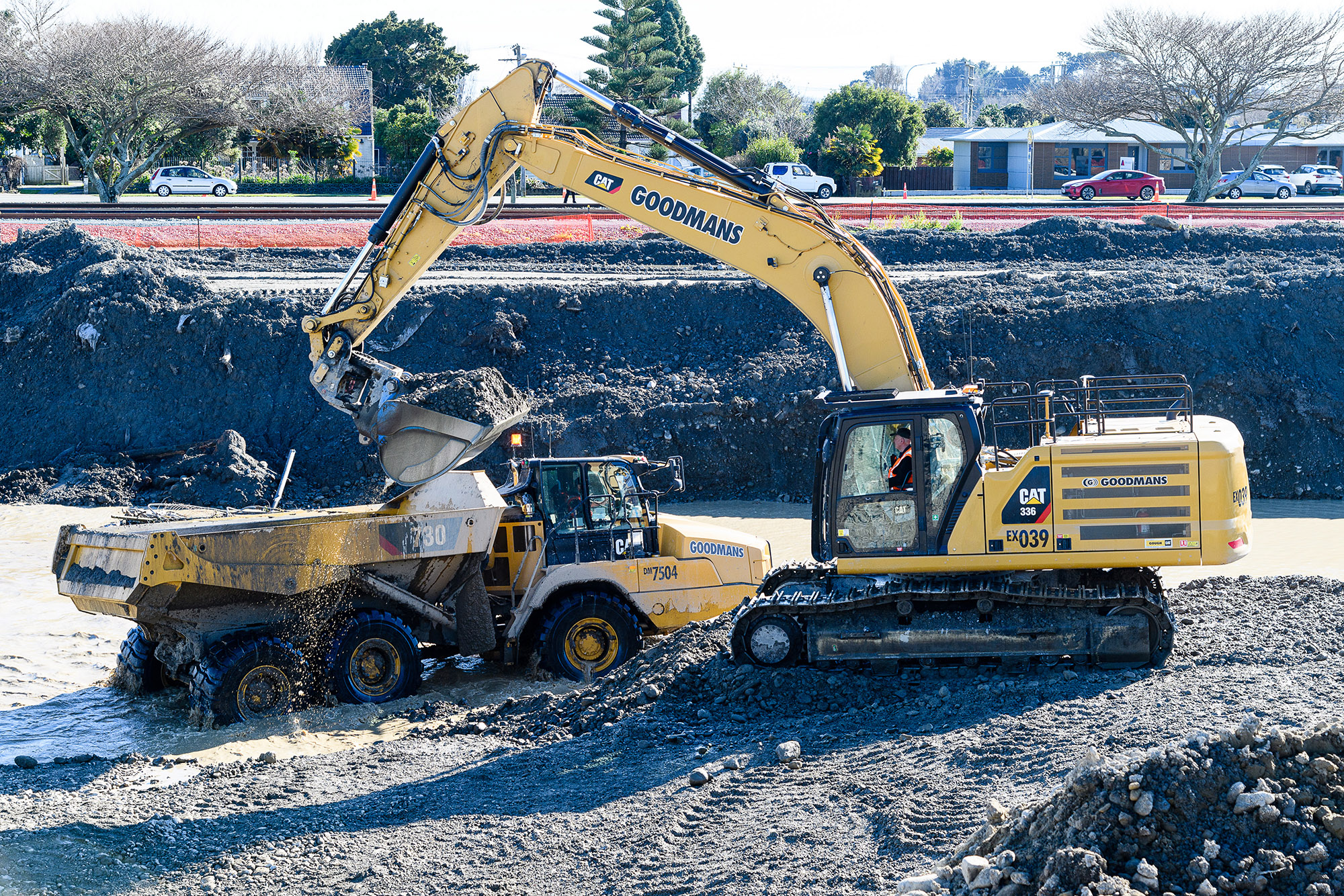
Earthworks being carried out between the Winstones and the Ōtaki Railway Station.
Earthworks, drainage and pavement works are all progressing in multiple fronts within this area. Works have commenced on a temporary section of SH1 to allow construction of the Ōtaki Gorge partial interchange, and works are progressing toward the planned opening of the first stage of realigning traffic onto a new section of School Road. Construction of Bridge 8 (Te Horo Overbridge) continues to progress well – all deck slabs will be poured on this structure by the end of the month.
Southern area update
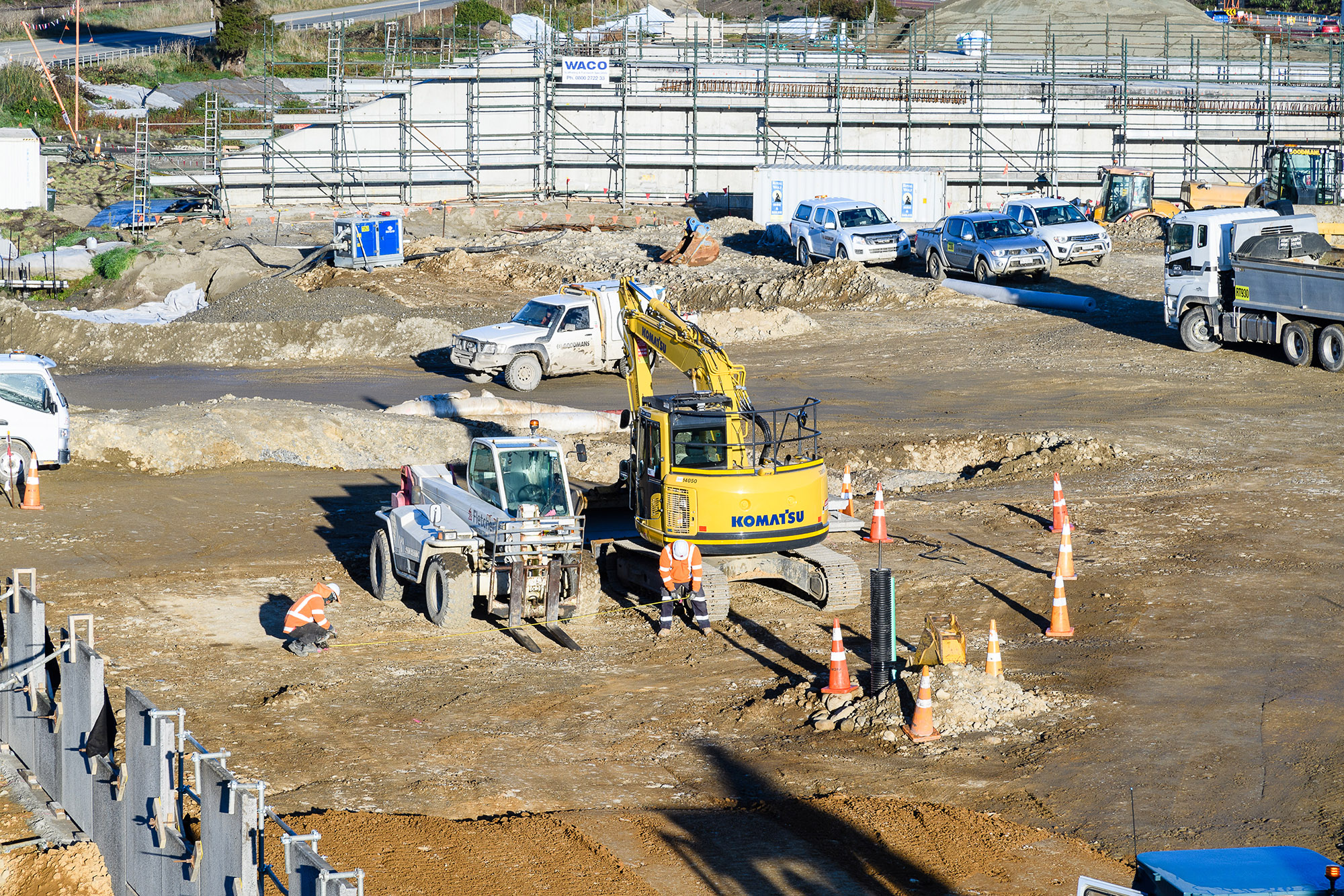
Bridge 9 under construction at Marycrest.
The most visible change in this area is construction of the Bridge 9 west abutment and approach embankment, which has risen out of the ground over the past 4–5 weeks. The adjacent bridge 10 box culvert and shared path underpass structures will both be completed this month. Pavement and barrier works will continue through the period on the Local Arterial Road (LAR) – all part of our plan to have all SH1 traffic realigned along the full length of the LAR from early to mid-October.